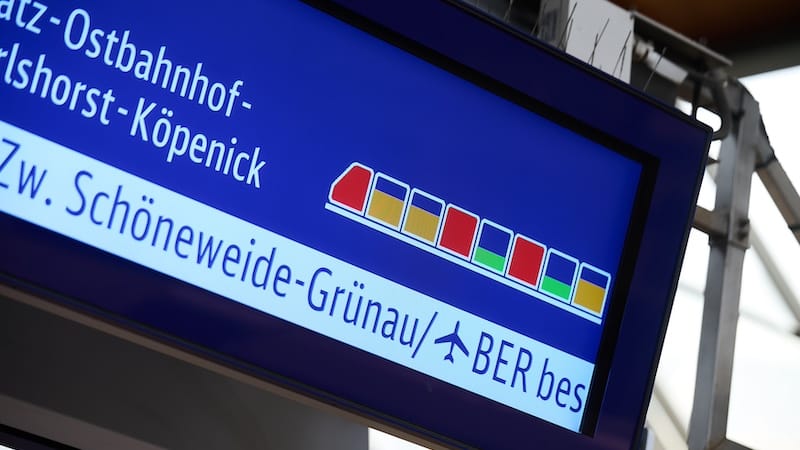
Jump on the full S-Bahn or would you rather wait for the next one because it might be emptier? In Berlin, passengers will now be able to see exactly this directly on the platform. The display of train utilization is being tested in real time in a pilot project.
For several years now, Google Maps users have been able to see how busy the tram, bus or S-Bahn is at a certain time. But this data can come from various sources and is sometimes based on forecasts and estimates.
The Berlin S-Bahn is now taking the next step and testing the display of train occupancy in real time. In a pilot project, information about the capacity utilization of the individual trains has been provided directly on the platform since the end of September.
How does the display of train utilization work in real time?
The “Lightgate” system is being used for the Berlin S-Bahn pilot project. This was developed at the Hamburg S-Bahn and is already in use there. These light barriers can measure in real time in the track area how much space is still available on the S-Bahn.
This works via the light that can be seen by the sensor in the passing train. The more crowded the S-Bahn, the less light that can come out through the windows.
The results of the Lightgate measurements are then visible to passengers in real time on the respective platform. The number and occupancy of the train cars is even displayed so that passengers can be better distributed on the platform.
The display is staggered in color and uses a simple traffic light system. Green stands for rail cars with little utilization. Wagons marked yellow already have less space and those marked red only offer a little space.
The details about the pilot project
For the pilot project, the Berlin S-Bahn installed a total of ten sensors on the routes between Jannowitz Bridge and the main station and between Tempelhof and Neukölln. The technology uses harmless LED light.
The sensors provide real-time data for the trains in both directions at the Alexanderplatz, Hackescher Markt, Friedrichstrasse and Hermannstrasse stops. In the Bellevue and Hauptbahnhof train stations, the advertisements are already available for the S-Bahn trains heading west.
The pilot project costs a total of 900,000 euros, which will be borne by Deutsche Bahn and the states of Berlin and Brandenburg. After the pilot phase lasting several years, the project partners want to evaluate the data and then “decide on further steps,” as the S-Bahn Berlin says.
Also interesting:
Source: https://www.basicthinking.de/blog/2024/10/02/zugauslastung-echtzeit/


